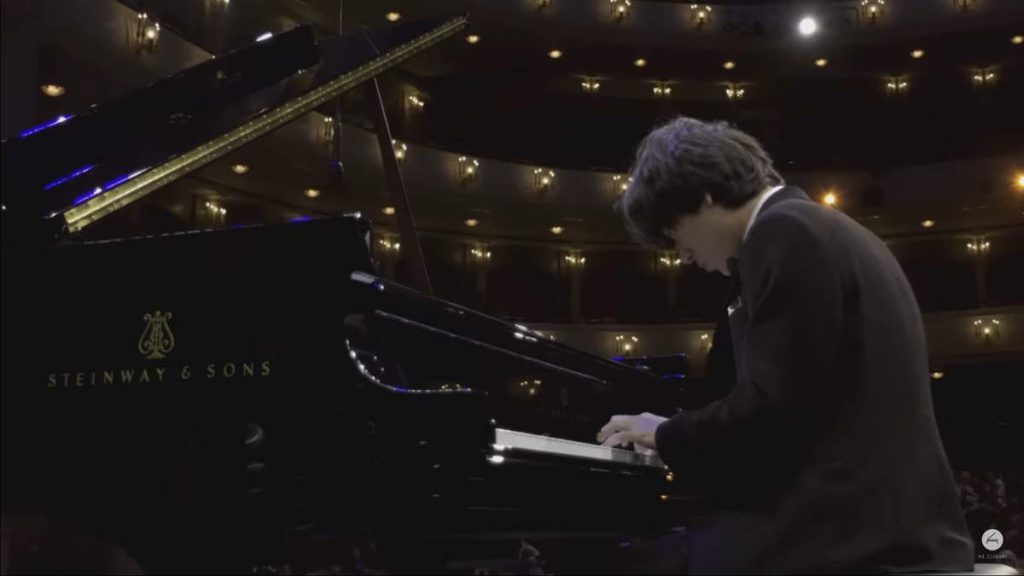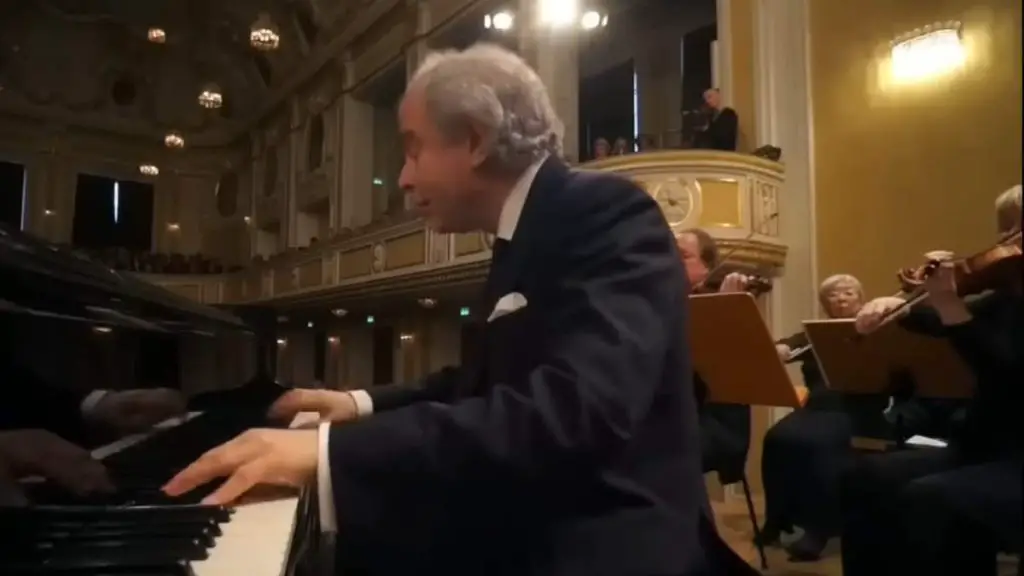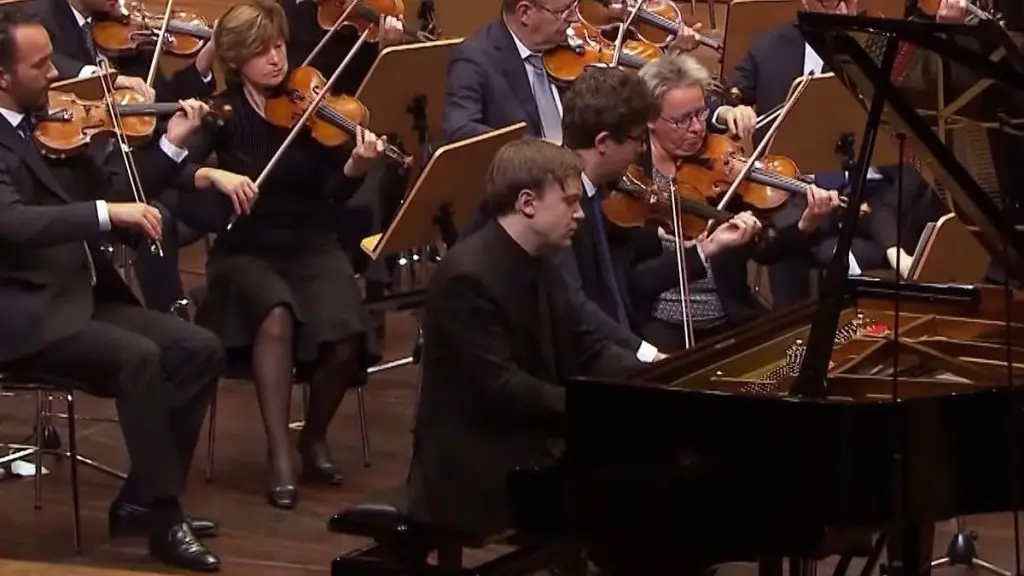Accompanied by the Fort Worth Symphony Orchestra, South Korean pianist Yunchan Lim performs Wolfgang Amadeus Mozart’s Piano Concerto No. 22 in E-flat major, K. 482. Conductor: Nicholas McGegan. Recorded on June 11, 2022, during the Semifinal Round at the Bass Performance Hall, Fort Worth, Texas. Yunchan Lim was named the winner of the 16th Van Cliburn International Piano Competition in Fort Worth, Texas, 2022.
Yunchan Lim launched onto the international music stage when he was 14. He won second prize and the Chopin Special Award in his first-ever competition, the Cleveland International Piano Competition for Young Artists in 2018.
That same year, he stood out as the youngest participant in the Cooper International Competition, where he won the third prize and the audience prize, which provided the opportunity for him to perform with the Cleveland Orchestra. 2019 meant more accolades, when, at the age of 15, he was the youngest to win Korea’s IsangYun International Competition, where he also took home two special prizes.
In 2022, when he was just 18, he performed across South Korea-including with the Korean Orchestra Festival, Korea Symphony, Suwon Philharmonic, and Busan Philharmonic Orchestras, among others, as well as in Madrid, at the invitation of the Korea Cultural Center in Spain. He also participated in the recording of “2020 Young Musicians of Korea,” organized by the Korean Broadcasting System and released that November.
Mozart’s Piano Concerto No. 22
Piano Concerto No. 22 in E-flat Major, K. 482 was written in 1785 during Mozart’s so-called “golden age” of concertos, a prolific period in the mid-1780s when he produced numerous masterpieces.
The E-flat Major concerto is distinctive for several reasons. It was the first of only two Mozart piano concertos to include clarinets in its orchestration. The addition of this woodwind instrument gives the concerto a unique tonal color compared to Mozart’s other piano concertos.
This concerto is particularly noted for its grand scale and elaborate orchestral scoring. It features a larger orchestra than many of his other concertos, including pairs of oboes, bassoons, horns, and trumpets, in addition to the clarinets, strings, and timpani. The expansive orchestration contributes to the work’s rich, sonorous quality.
The concerto showcases the dramatic range of Mozart’s music, with a wealth of thematic material and innovative development that blends virtuosity and depth of expression. While I won’t delve into movement details as per your request, the overall concerto exemplifies Mozart’s mastery in combining orchestral and solo instruments, creating moments of dialogue, contrast, and integration.
Mozart’s Piano Concerto No. 22 is a testament to his brilliance as a composer and his ability to push boundaries in terms of form, orchestration, and musical expressiveness. The work is celebrated for its melodic beauty, sophisticated structure, and emotional depth, making it a favorite in the concerto repertoire.
Movements
1. Allegro
The first movement of Mozart’s Piano Concerto No. 22 in E-flat Major, K. 482, is marked “Allegro,” a lively tempo. It is written in the typical sonata-allegro form used for first movements, which includes exposition, development, and recapitulation.
The movement opens with a grand orchestral introduction that presents the main themes, a standard in the Classical concerto form. The principal theme is notable for its majestic character, emphasized by the timpani and brass instruments, which are featured prominently in this concerto.
When the solo piano enters, it doesn’t merely reiterate the orchestra’s themes; instead, it expands on them and introduces new material, showcasing Mozart’s innovation within the Classical form. The piano and orchestra engage in an intricate dialogue, each taking turns developing and varying the themes.
The development section of the movement is notable for its exploration of contrasting keys and further thematic development. It offers an exquisite blend of drama and virtuosity, with the piano often responding to the orchestra’s statements.
The recapitulation, where the main themes are revisited, doesn’t strictly follow the exposition. Mozart creatively manipulates the themes, and in a non-traditional move, he includes a written-out cadenza for the piano early in the recapitulation rather than at the end.
2. Andante (Variations), C-minor
The second movement of Mozart’s Piano Concerto No. 22 in E-flat Major, K. 482 is marked “Andante.” This is a slower tempo marking, and the music of this movement contrasts with the liveliness of the first movement, providing an introspective, lyrical, and expressive character.
The Andante is written in a simple ternary (A-B-A) form, a common choice for slow movements in the Classical era. The movement commences with a theme that’s beautifully serene, underlined by the warmth of the added clarinets in the orchestration.
The A section presents this theme with the piano and orchestra collaborating to create an atmosphere of tranquillity and repose. The music is both expressive and ornate, with the piano weaving intricate patterns around the orchestral line.
The B section, or the middle section, presents a contrast to the opening theme. This portion of the movement takes on a more dramatic and impassioned tone. It’s worth noting that Mozart doesn’t employ the typical full orchestration here. Instead, the strings perform with mutes, and the wind instruments are absent, creating a unique, muted texture that highlights the piano’s melodic line.
Following the B section, the A section is recapitulated, bringing back the initial serene theme, but with new embellishments and variations.
This second movement of Mozart’s Piano Concerto No. 22 is noted for its expressive depth and delicate orchestration, providing an introspective pause between the more extroverted first and third movements. It’s a testament to Mozart’s ability to convey profound emotion within the structure of a classical concerto.
3. Allegro
The finale of Mozart’s Piano Concerto No. 22 in E-flat Major, K. 482, is marked “Allegro – Andantino cantabile – Primo Tempo.” It is in the form of a rondo, a musical form characterized by the recurring return of a main theme interspersed with different contrasting sections.
The finale’s main theme, which is robust and cheerful, is first presented by the full orchestra before the piano enters with its interpretation. This theme serves as a recurring refrain that returns after each contrasting section, creating a sense of familiarity and unity throughout the movement.
The first contrasting section, or episode, marked “Andantino cantabile,” offers a serene and lyrical contrast to the lively Allegro theme. This portion of the movement showcases Mozart’s ability to compose beautifully expressive melodic lines.
As the movement progresses, Mozart presents other episodes that offer further contrast, all the while maintaining the back-and-forth structure of the rondo form. The piano and orchestra continue to engage in a lively and intricate dialogue, each offering their unique take on the musical material.
The movement, and thus the concerto, concludes with a return to the “Primo Tempo,” or first tempo, presenting the Allegro theme with renewed vigor and leading to a spirited and satisfying conclusion.
Sources
- Piano Concerto No. 22 (Mozart) on Wikipedia
- “Something Rare: Mozart’s Piano Concerto No. 22 In E-flat Major, K. 482” on the Houston Symphony website
- “Mozart: Piano Concerto No. 22, in E-flat, K. 482” on the L.A. Phil website
- Piano Concerto No. 22 in E-flat major, K. 482 (Mozart, Wolfgang Amadeus) on the International Music Score Library Project website



No, there are no oboes in this concerto. Along with the pairs of clarinets and bassoons, there is only a single flute in the woodwind section.